All content on this site is intended for healthcare professionals only. By acknowledging this message and accessing the information on this website you are confirming that you are a Healthcare Professional. If you are a patient or carer, please visit Know ALL.
The all Hub website uses a third-party service provided by Google that dynamically translates web content. Translations are machine generated, so may not be an exact or complete translation, and the all Hub cannot guarantee the accuracy of translated content. The all and its employees will not be liable for any direct, indirect, or consequential damages (even if foreseeable) resulting from use of the Google Translate feature. For further support with Google Translate, visit Google Translate Help.
The ALL Hub is an independent medical education platform, sponsored by Amgen, Autolus, Jazz Pharmaceuticals, and Pfizer and supported through an educational grant from the Hippocrate Conference Institute, an association of the Servier Group. The funders are allowed no direct influence on our content. The levels of sponsorship listed are reflective of the amount of funding given. View funders.
Now you can support HCPs in making informed decisions for their patients
Your contribution helps us continuously deliver expertly curated content to HCPs worldwide. You will also have the opportunity to make a content suggestion for consideration and receive updates on the impact contributions are making to our content.
Find out more
Create an account and access these new features:
Bookmark content to read later
Select your specific areas of interest
View ALL content recommended for you
Dose optimization of inotuzumab ozogamicin for adult B-ALL
Do you know... In the pooled studies B1931010 and INO-VATE and in the B1931030 study, which dose of inotuzumab ozogamicin had a greater clinical utility index?
Inotuzumab ozogamicin was approved by the FDA and EMA in 2017 for the treatment of adults with relapsed/refractory CD22-positive B-cell precursor acute lymphoblastic leukemia. The FDA issued a post-marketing requirement due to concern that the proposed starting dose of 1.8 mg/m2/cycle of inotuzumab ozogamicin may not be optimal. The analysis, presented at ASH 2024 by DeAngelo, quantitatively measured the optimal trade-off between safety and efficacy using pooled data from the B1931010 and INO-VATE studies as well as data from the B1931030 study. These analyses support the current FDA-approved higher dose of 1.8 mg/m2/cycle, compared with the lower dose of 1.2 mg/m2/cycle, in balancing the efficacy and safety of inotuzumab ozogamicin in adult patients with relapsed/refractory acute lymphoblastic leukemia.
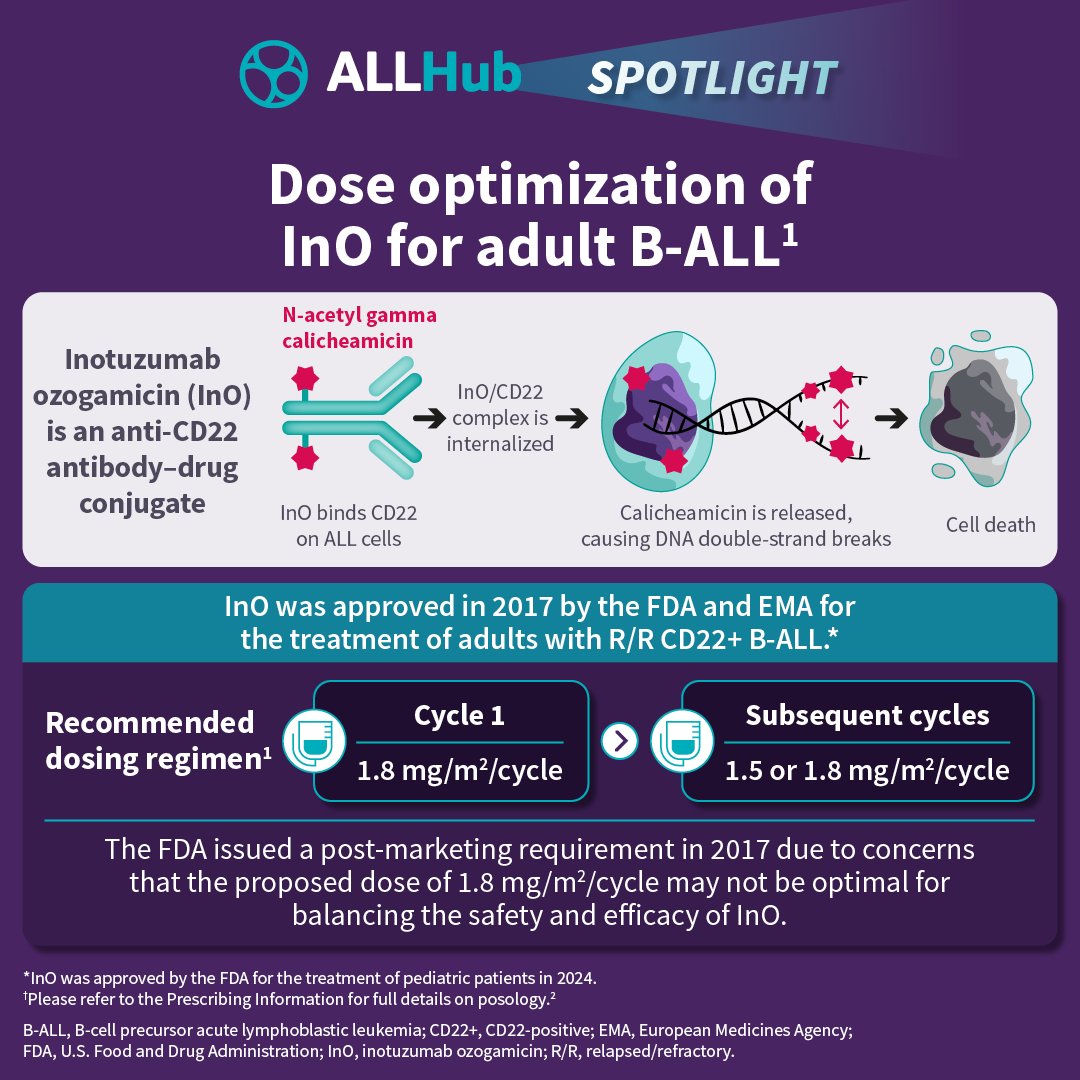
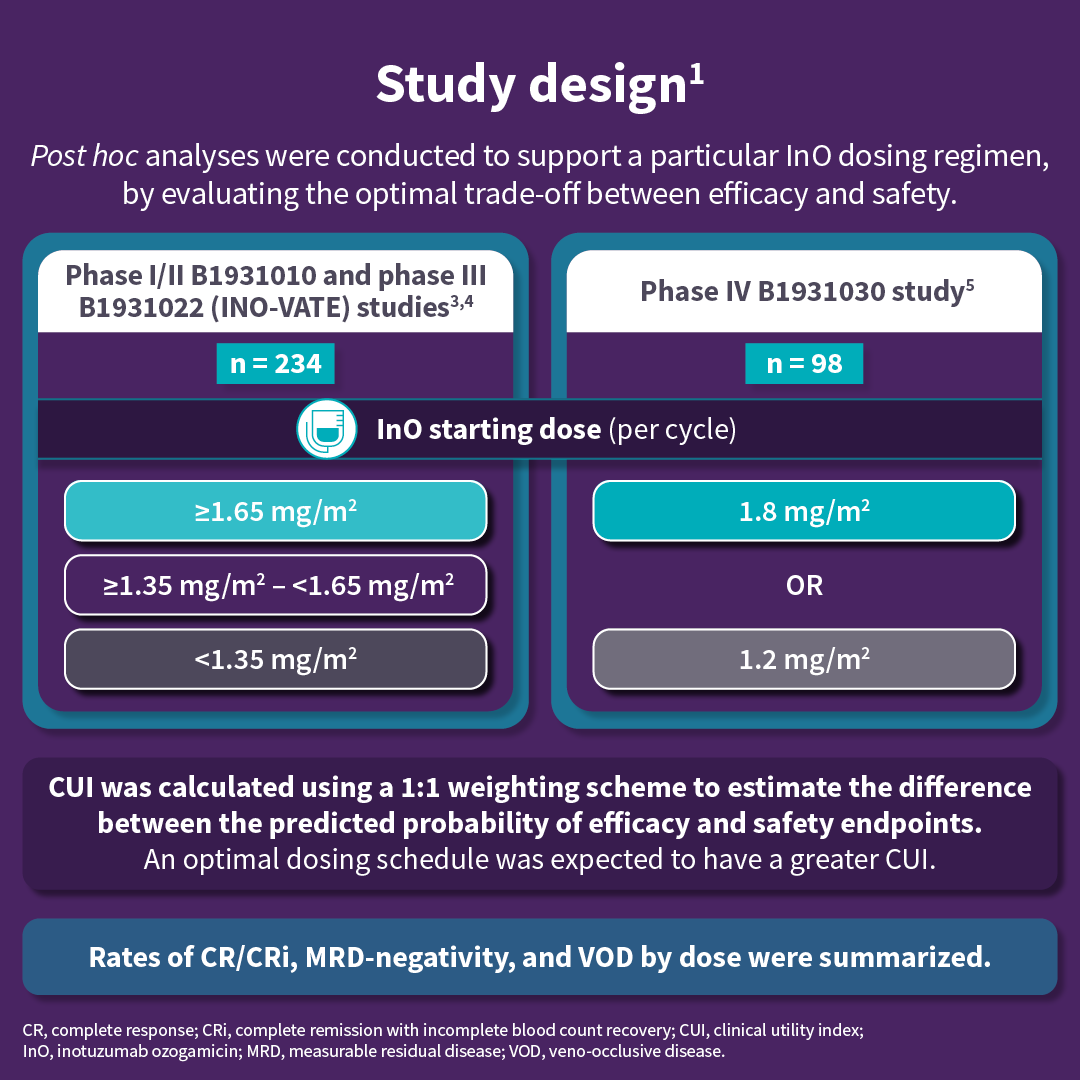
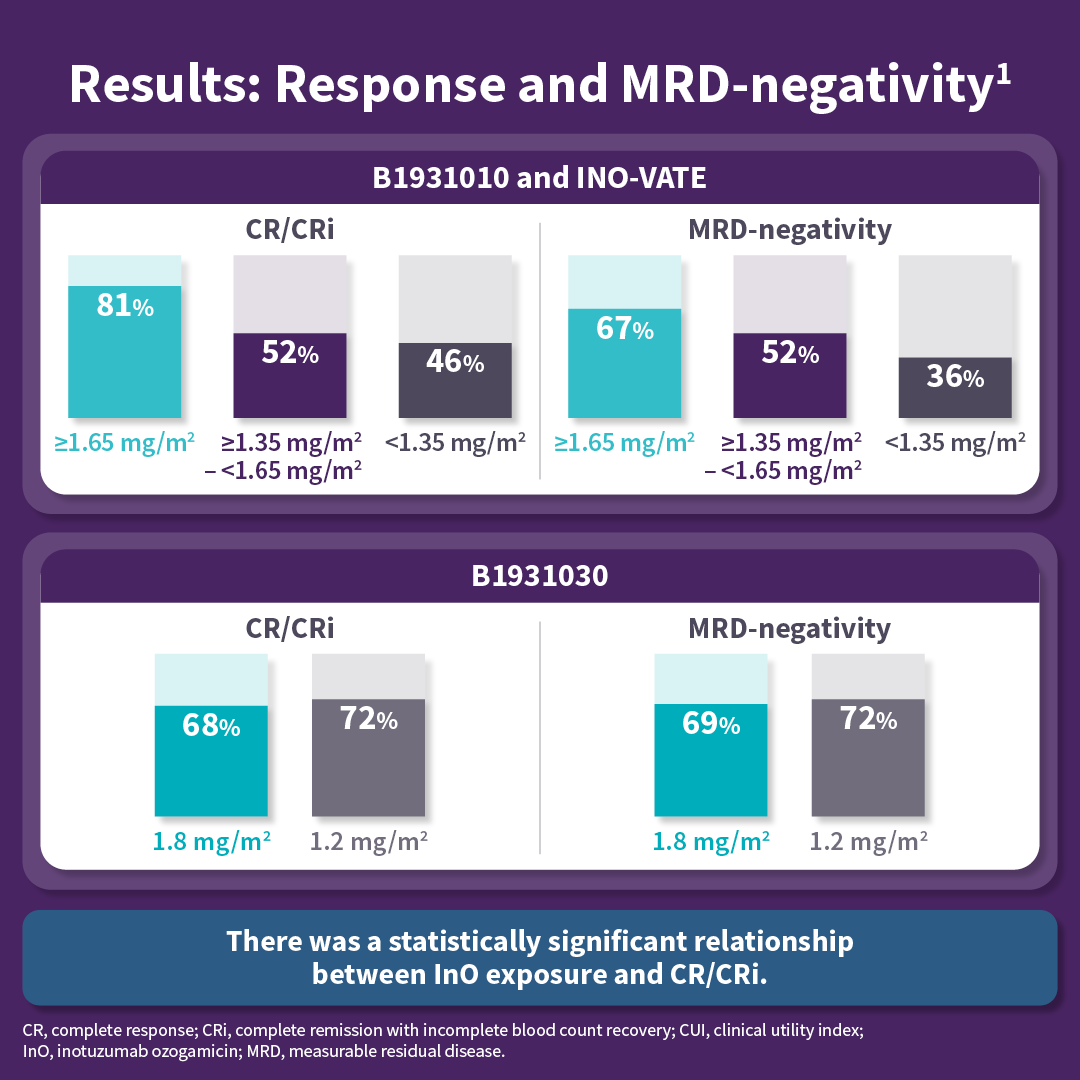
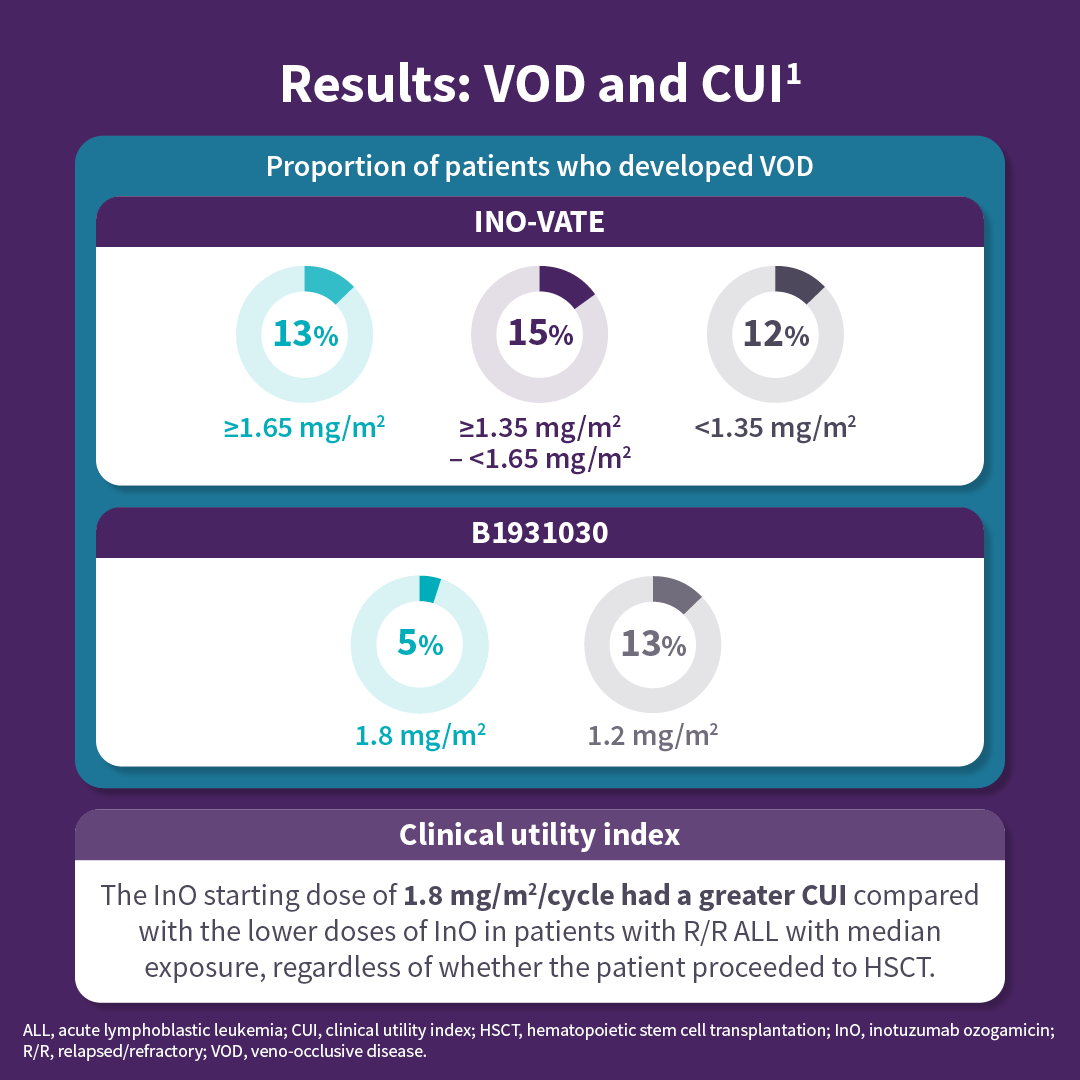
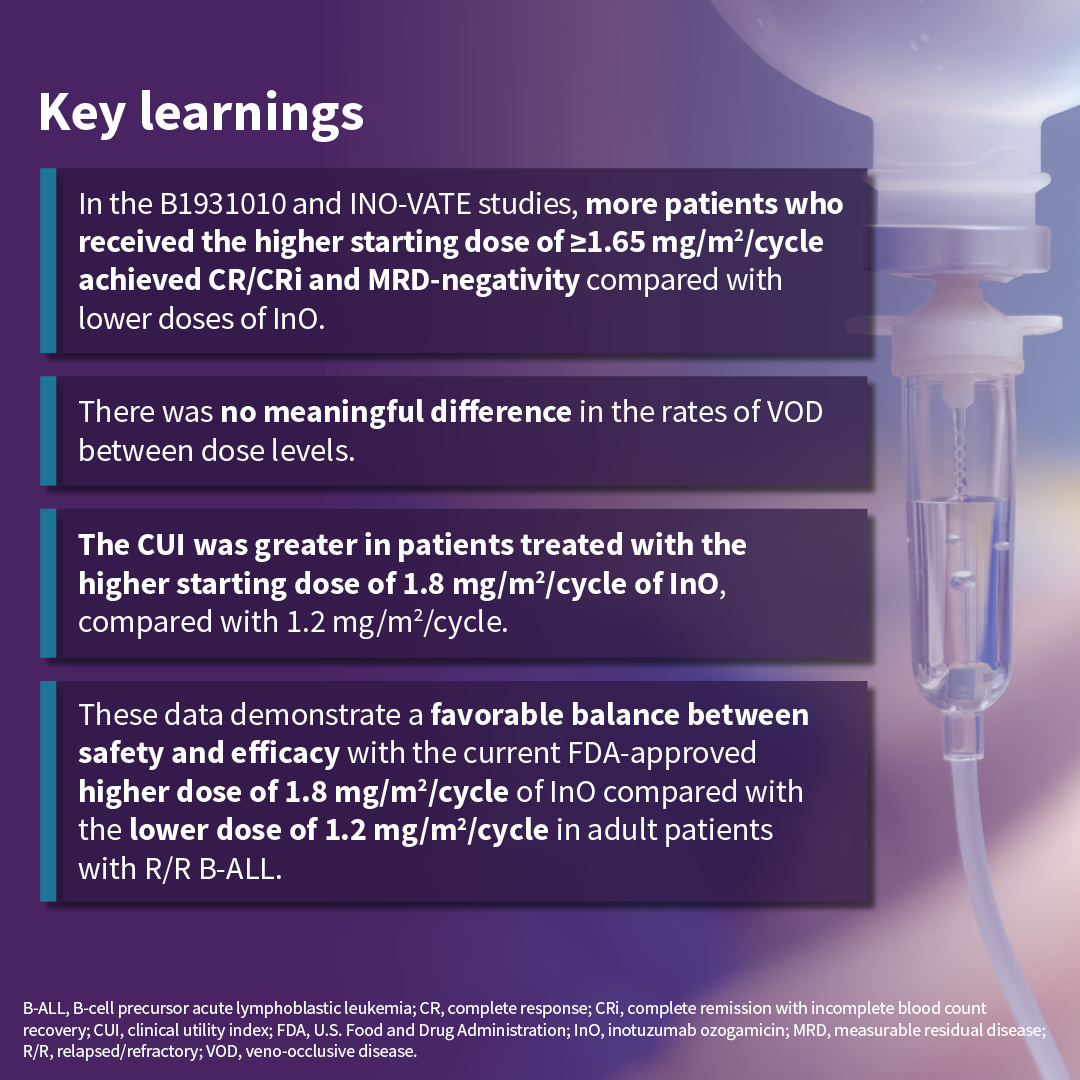
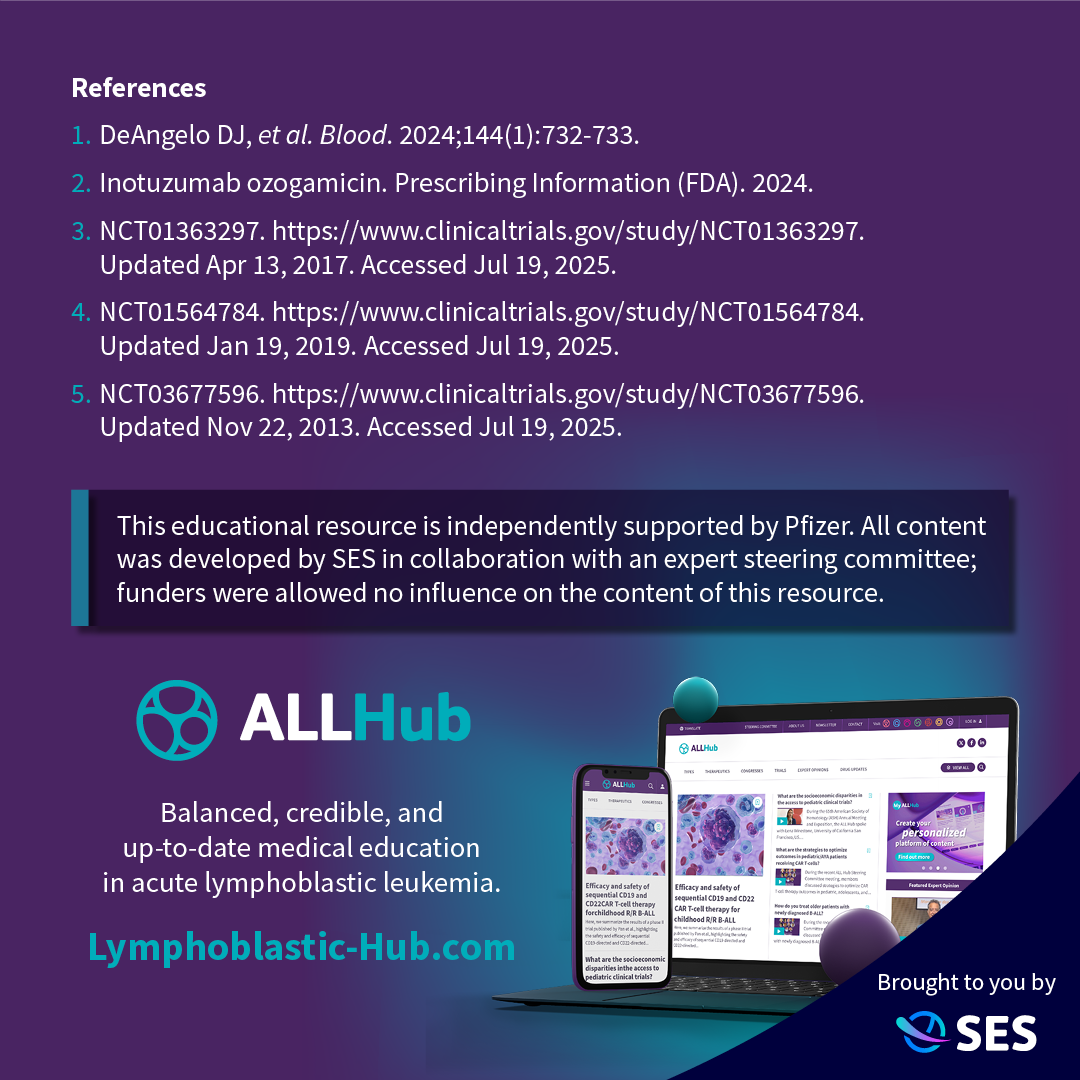
This educational resource is independently supported by Pfizer. All content was developed by SES in collaboration with an expert steering committee; funders were allowed no influence on the content of this resource.
References
Please indicate your level of agreement with the following statements:
The content was clear and easy to understand
The content addressed the learning objectives
The content was relevant to my practice
I will change my clinical practice as a result of this content


